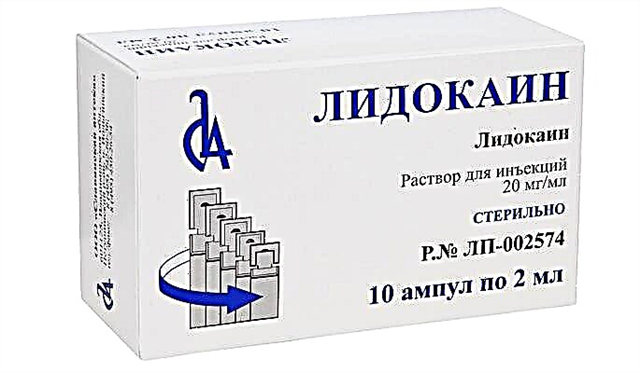
When a woman is carrying a child, she should be alert to any medications she takes. This is especially important in the first months of pregnancy, when all the organs of the unborn baby have just begun to form, and under the influence of medication, this process can be disrupted. Taking "Paracetamol" raises a lot of questions for expectant mothers, because it is one of the most effective and popular drugs for fever and pain.
If a pregnant woman has a fever or is worried about painful sensations, it is this drug that the doctor will most often prescribe. However, it is still not worth taking such a medicine in the first trimester.

How does it work?
The active substance of the drug is also called paracetamol and has several therapeutic effects, among which the most pronounced are analgesic and antipyretic. They are associated with the effect of such a drug on the centers of pain and thermoregulation due to the inhibition of prostaglandins (this is the name of the substances that cause inflammation, increase body temperature and increase pain).
The action of "Paracetamol" begins to appear after 40-60 minutes, depending on the dosage form, and lasts about 4-6 hours. Elimination of the drug from the body occurs mainly in the urine.

Is it allowed in the 1st trimester?
In the first weeks of pregnancy, it is advisable for the expectant mother to refrain from taking any medications, even if they are called safe.
If there is an opportunity not to take "Paracetamol" (for example, the pain is tolerable or the fever is small), then you should refuse it. The use of such a medication is permissible in extreme cases, when you cannot do without it.
The fact is that it is in the first trimester that all the important organs of the baby are laid. And the influence of any external factor, which includes medicines, can be destructive. Although in very rare cases, but "Paracetamol" taken in the first 12 weeks, can cause defects or cause miscarriage. Therefore, drinking such a medicine is permissible only in situations where the benefits of taking it will be higher than the possible risk for the baby.

When is it used?
The most common reason for the appointment of "Paracetamol" to pregnant women, not only in the first trimester, but at any time, is an increased body temperature. The drug should be taken when the thermometer showed more than +38 degrees, since with such a rise in temperature, the risk of a negative effect of fever on the fetus increases. The medicine will help an expectant mother who is sick with flu or other infection, but with a slight increase in temperature, it is better to use safer alternative methods.
Effective analgesic effect also allows you to take "Paracetamol" in case of pain. The medication is in demand for toothache and headache, with painful sensations in muscles or joints, with injuries or burns, and in other cases.
If the pain is unexpressed and the expectant mother can tolerate it, then it is worth refusing to take the medicine. But severe pain can harm the baby, as it will be a source of stress and discomfort for a woman, so the use of "Paracetamol" will be justified.

Potential harm
Although doctors classify "Paracetamol" as a drug with predominantly good tolerance, the body of some patients may react negatively to such a drug. Such an adverse reaction is associated with an individual intolerance to paracetamol or one of the auxiliary components of the form of the drug used. It can manifest itself as a rash on the skin, itching, and other allergic symptoms. Some women also have a negative digestive system reaction such as nausea, stomach discomfort, heartburn, or stool changes.
"Paracetamol" is definitely harmful for those expectant mothers who have contraindications for taking it. These include not only hypersensitivity to the drug, but also such serious pathologies of the gastrointestinal tract as bleeding and peptic ulcer disease. The drug is not used when there is a deficiency in the body of an enzyme called glucose-6-phosphate dehydrogenase.
There are also contraindications for certain forms of "Paracetamol", for example, suppositories are not used for proctitis, and the suspension is not prescribed for impaired absorption of carbohydrates. In addition, with many serious illnesses, the risk of side effects from taking Paracetamol will increase. These include liver pathologies, bronchial asthma, kidney disease, hematopoiesis disorders, and so on. Therefore, if the expectant mother has some kind of chronic disease, then she can bring down the temperature with "Paracetamol" only under the supervision of a doctor.
The drug is also harmful if single dosages are not followed, if taken too often or if treatment is too long. Excessive doses of "Paracetamol" can adversely affect the liver of a pregnant woman, as well as the state of the gastrointestinal tract, hematopoietic organs or kidneys. It is equally important to consider the compatibility of such a drug with any other medications that the expectant mother can take. Some drugs reduce the effect of "Paracetamol" or increase the likelihood of side effects, so before taking them, you should check with your doctor or the paper annotation that is included in the package of the medicine.

Release form and dosage
Paracetamol is produced by many pharmaceutical companies, and the number of its dosage forms is very diverse. This allows infants and patients with vomiting and in emergency cases to take the drug. The most popular type of medicine for expectant mothers is pills. They are small, affordable, have a long shelf life (3-5 years), contain 200 or 500 mg of active ingredient, and are sold in packs of 10, 20 or more. Such "Paracetamol" is convenient to purchase for a home first aid kit and use as needed.

Candles are another popular dosage form during pregnancy. This version of paracetamol helps out with toxicosis, since it is not taken by mouth and does not provoke nausea. In addition, suppositories have the simplest composition - they include only a fatty base and an active substance. In this case, the dosage of paracetamol in one candle can be from 50 to 500 mg, so you can choose the appropriate option for any age.
Effervescent tablets are no less popular, as they begin to act faster than usual. This "Paracetamol" is produced by the Hemofarm company, dissolves quickly in water to form a pleasant-tasting drink and contains 500 mg of the active ingredient per tablet. The medicine is sold in plastic tubes of 10-40 tablets.


There are two more forms that are used much less frequently in pregnant women. One of them is a solution for injections, which is injected mainly in a hospital in cases where you need to quickly eliminate pain or bring down a high temperature. The risk of its side effects is higher, therefore, it is resorted to only in emergency cases.
The second form is a sweet suspension. This drug is called "Children's Paracetamol", as it is in demand among children due to its pleasant taste and liquid consistency. However, the dosage of the active ingredient in one spoon is small (120 mg), so adults need to drink quite a lot of suspension. But if there were no candles or pills at hand, the expectant mother can use such "Paracetamol".

How to use?
Before drinking Paracetamol or using a candle, you should check with your doctor for a single dose. For adults, the dosage of such a drug per dose is usually 500 mg, but for the expectant mother it is often reduced in order to minimize the risk of harmful effects on the baby.
For example, if a pregnant woman has a toothache, her doctor will advise her to take a 200 mg pill or dissolve half of an effervescent tablet. And if such an amount of active substance helps to cope with pain, then there is no need to increase the dosage. However, sometimes this dose is not enough and the doctor increases it to 500-1000 mg, but it is prohibited to take more than 1 g at a time.
As for the frequency of use, the use of "Paracetamol" in the first trimester should only be in urgent need. This means that the medicine is taken once when the fever or pain is severe. If the temperature has dropped, and the pain has passed, you cannot take the drug again for prevention.
It is permissible to take "Paracetamol" the next time only when the temperature starts to rise again and the thermometer shows more than 38 degrees or the pain will resume. At the same time, you can drink a pill or re-enter a candle only after 4 hours, and taking it more than four times a day is unacceptable.
The maximum dosage of the active substance per day is 4000 mg. The duration of admission allowed for pregnant women is 1-3 days.

Reviews and analogues
Most women who, while carrying a child, had to take "Paracetamol" as a remedy for pain or fever, respond positively about it. The advantages of this drug are considered a large selection of dosage forms and availability ("Paracetamol" is available in almost any pharmacy and is sold without a prescription), as well as the effectiveness and rare occurrence of adverse reactions. The disadvantages include the fact that the medicine acts no earlier than 40-60 minutes after administration, and the duration of the therapeutic effect is short (3-4 hours).
If you need to replace “Paracetamol” with some other drug, you can use “Efferalgan”, “Calpol” or “Panadol”. The basis of these drugs is the same active substance, and the dosage forms, dosages, indications, as well as possible side effects and negative consequences of such medicines are identical.
In this case, the expectant mother should be careful about paracetamol-based combination drugs containing pheniramine, vitamin C, caffeine and other components. As a rule, these are powders or effervescent tablets from which a medicinal drink is prepared. You cannot take them during pregnancy.
As for replacing "Paracetamol" with "Nurofen", "Mig", "Ibufen" or another ibuprofen drug, then in the first trimester it is permissible. In addition, such analogs have a longer therapeutic effect and cope well with fever or painful sensations, so they are often chosen instead of "Paracetamol" if its effect was not strong enough.
There are also drugs that contain both ibuprofen and paracetamol, such as Ibuclin and Next. They are not contraindicated in the first months of pregnancy, but it is advisable to consult your doctor before taking such drugs.
For more information on taking "Paracetamol", see the next video.



